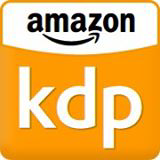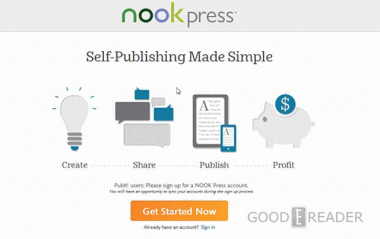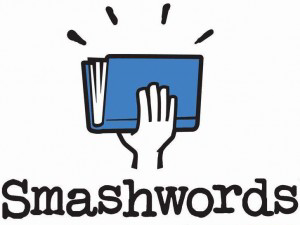At the beginning of September, I attended the Rocky Mountain Fiction Writer’s Colorado Gold Conference. The best part, as with every writer’s conference, is meeting other writers and talking shop, talking about writing, and about books, and discussing, at length, the pros and cons of the Oxford Comma.
One of the panels I went to, and, I think, my favorite panel, was “Building a Sticky Digital Readership” given by Courtney Milan. This woman was smart, and by that I mean, not only did she have a lot of experience in the publishing industry, she was savvy to how it worked, and was able to impart her knowledge to me. What made the panel even more valuable was the fact that Ms. Milan had handouts (so we didn’t have to scribble like mad the whole time), and she was easy to listen to – a little funny, a little snarky, and a whole lot informative. It was only later that I discovered that Ms. Milan was a best-selling and very successful historical romance writer, but her easy-going attitude belied any sense of self-importance. If I ever get famous, I want to come across like Ms. Milan does.

Here are my notes, which I wrote on the back of anything I could get my hands on, as I’d neglected to bring a notebook! Though at least I had a pen.
***
A small group of dedicated and engaged readers is better than a large group of disengaged readers. You have to build up your readership slowly.
Consider the ebook. Samples for readers who are interested include the 1st 10 percent of the book, thus you would want to put a lot of the stuff in the back, so as not to disrupt their reading pleasure.
Readers are interested in covers, and then, bam, the story. The old fashioned way is to put everything up front, and this is fine for print books. But ebooks and ebook readers have different requirements and you have to be able to think sideways. You know how you have the title and copyright info and the dedication and the table of contents, etc, all up front – before the real story even begins? Consider putting some of that in the back.
At the back of the book, right after the story ends, put the “call to action” notice. That’s the “thank you for reading my book, would you like to leave a review? Here is the link.” And “are you interested in reading my other books? Here is a link….”
Also, if you’ve got a Kindle ebook (a mobi file), then the links would lead to Amazon only.

If you’ve got one for Nook, same thing, all links lead to your site or to Nook.

The links are specific to the channel of distribution. Mobi, Smashwords, Nook, Kobo, Apple, etc.
Courtney says they did a test on a book that demonstrates that the back matter really helps sales.
If you have a series, make it very clear in both the book’s description and the back matter and the website where you have your books on your blog, that you LIST the order in which the books come. It’s no use having a series, if people don’t know which book comes first, and second, and so on.
See Courtney’s link for one way to do it.
About newsletters. The word newsletter says to me that you fill it with chatty stuff about yourself and what you’re doing. That’s not true, actually. Some people do, but you don’t have to. Courtney suggests having a “new release email list” instead. It allows you to a) collect people’s emails, and b) let your readers know when you have something new, or have a giveaway, or a near freebee or a cover reveal – something fun.
The last thing was something about tiny urls or smart URLS, she called them. It’s a place where you can create a link where you can change where it links to. (I don’t quite understand how tiny URLs work….or why anyone would need this but here’s the link.
In conclusion:
1 – Create email lists to update readers.
2 – Put back matter in your ebooks and print books, a call to action, an invitation, and a thank you.
3 – Make sure your series are organized so people can figure out where to start, or what comes next.
4 – Use smart URls.
***
So I did this, right? I had my ebook formatter (the ever-patient Sharon) update the last page in each of my versions with a call to action and a thank you: Kindle – Mobi, Nook – Epub, Kobo – Epub, and Smashwords – Epub. All she did was add a page with a few links – nothing else was changed.
Wouldn’t you know it. The Kindle mobi verion was perfect and went up without a single snag.
Nook insisted that my file name had to be less than 50 characters; except that the file name for the new file was exactly the same as the old one and is (I counted) 45 characters long. I have written them, and am awaiting their reply.
Kobo wouldn’t accept the file for any reason that I could ascertain; while I was trying to figure it out, I got stuck in “Edit” mode (which is where you can edit the file while in Kobo). No matter what I did, even pressing the Stop Editing button, I could not get out of the loop. I have written them, and am awaiting their reply.

As for Smashwords, there was a technical error that the system gave back to me. I didn’t understand the error so I wrote to them. They couldn’t help with technical matters, they said, but gave me a link to an online community, where I was able to parse out what might be the problem. Then, in some frustration at not understanding the whole issue, I forwarded the problem to Sharon, who was right on the ball in fixing it. I was able to upload to Smashwords right away after that.

So in conclusion, I learned a lot from this, both from Ms. Milan and from the experience. But from the experience directly, I learned that I would like to be able to update my own ebooks without having to pester Sharon when she’s trying to learn German. I also learned that Amazon works. Plain and simple, it works. Is that why so many authors use their platform?
I know I should be using all the formats to get my books to audiences, Nook, epub, Kobo, Smashwords, etc. But I have ended up using only Amazon and because of that I can use Amazon Prime, too, and I do get sales from that (where my books are free to Prime subscribers but I still get paid.) So (for now) Amazon works for me.
Well, Amazon is sure a terrific sales channel, and definitely easy to use. Replace files? Snap! Replace cover? Snap! Get sales reports? Easy-peasy. But I’m thinking, the more places your books is available, the better. : D